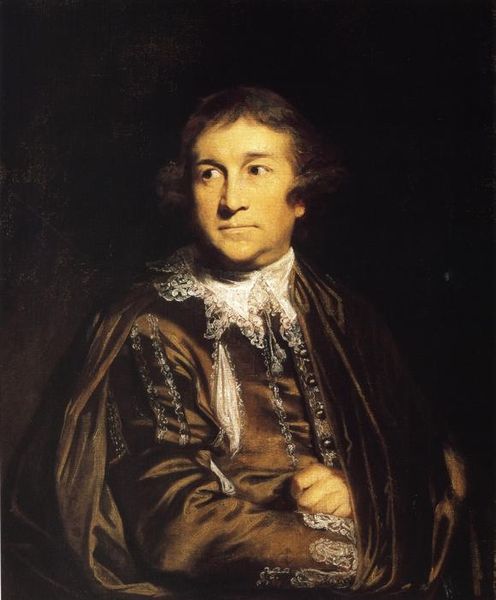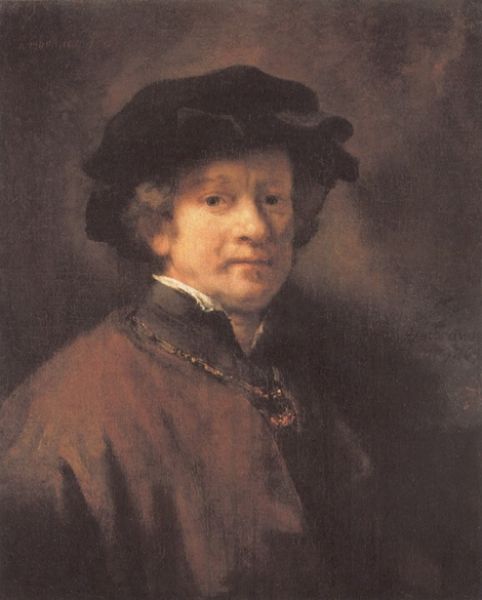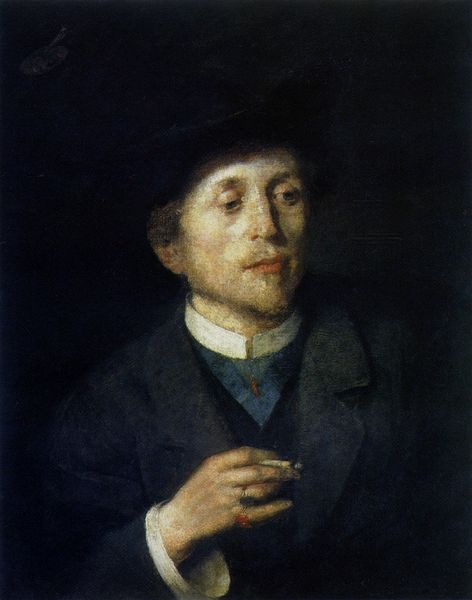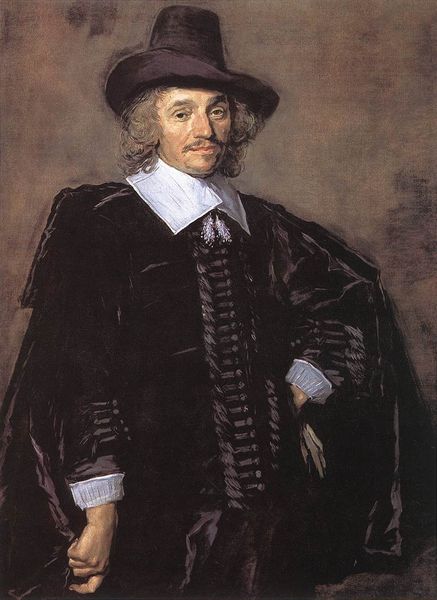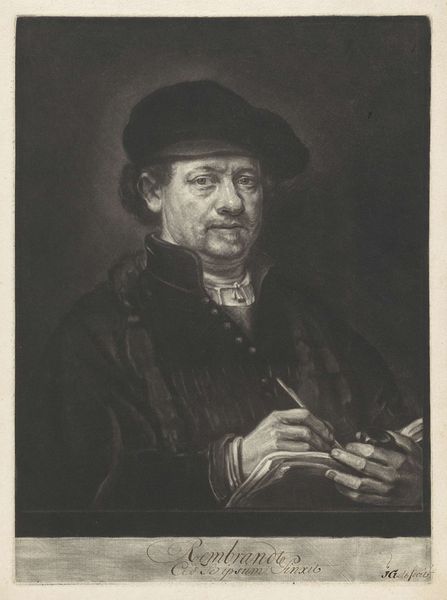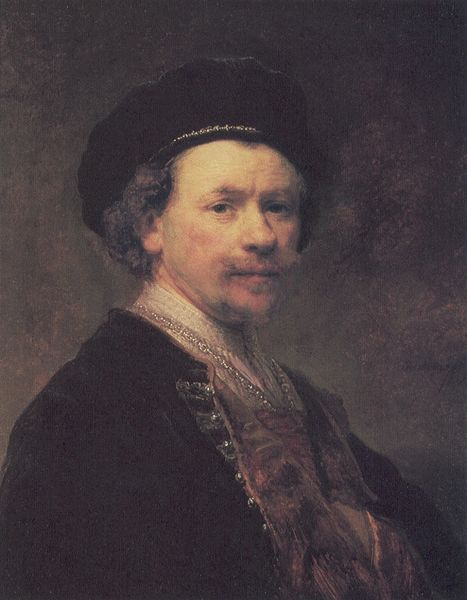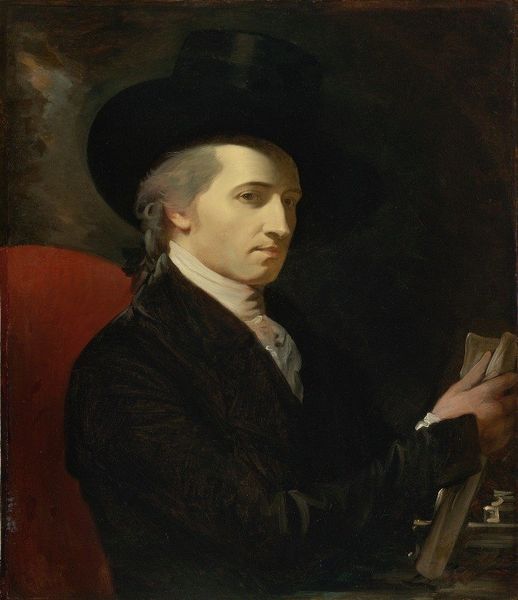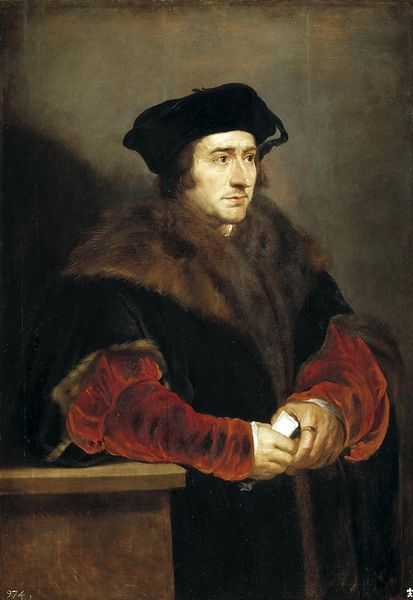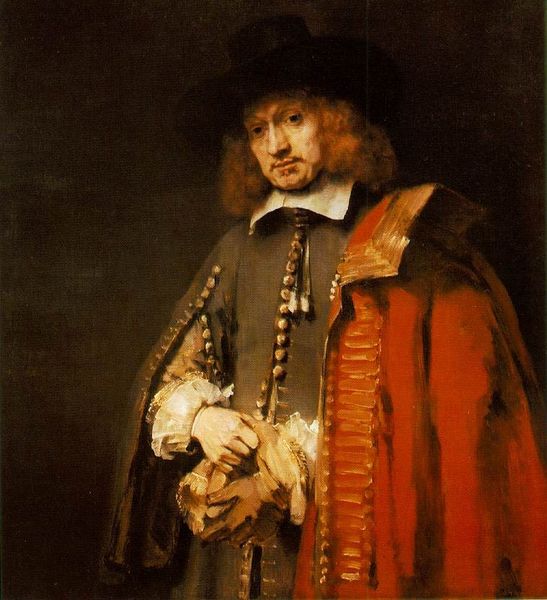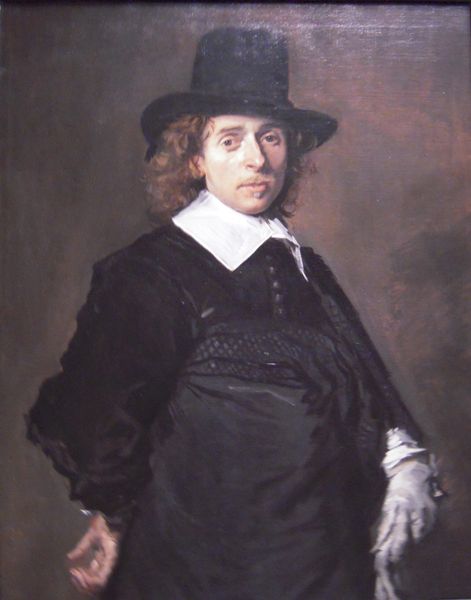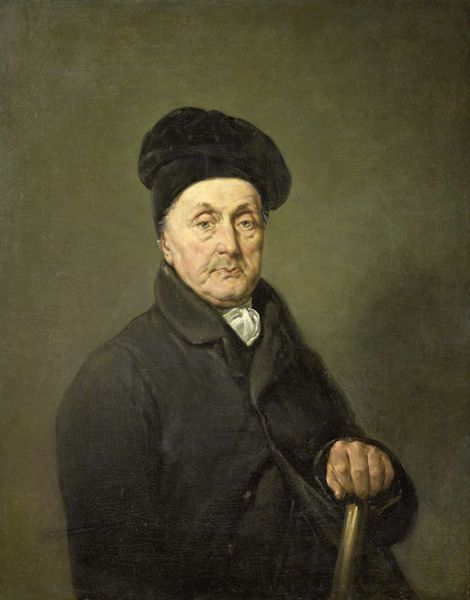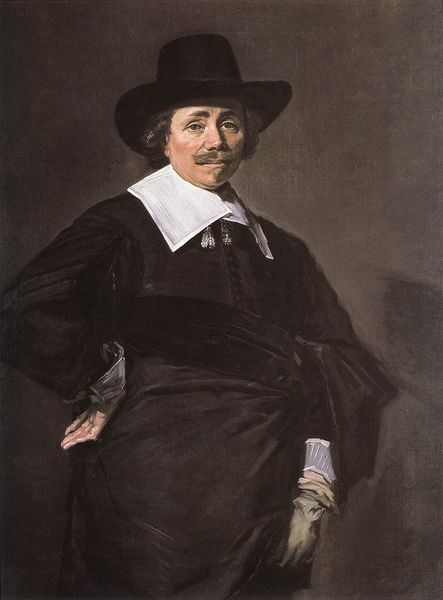
Dimensions: 72 x 58 cm
Copyright: Public domain
Editor: So, here we have Joshua Reynolds' Self-Portrait from 1775, done in oil. The darkness is so intense, and the way he's holding that rolled-up paper, it's almost theatrical. What do you make of this piece? Curator: Let's look at the materials themselves. Oil paint allowed for this dramatic chiaroscuro, which wasn't just aesthetic, it was a product of its time. Reynolds was very aware of the market; portraits were in demand, but so was a certain kind of image-making, one that elevated the sitter. Editor: Right, because painting someone's portrait back then was almost like printing money for the artist. How do his materials reflect this economic reality? Curator: Exactly. Consider the pigment: where did it come from? Who mined it, processed it? The cost of ultramarine, for example, often dictated its use. Reynolds’s lavish application here speaks to a deliberate demonstration of wealth and status, not just of the sitter, but of Reynolds himself, the orchestrator of this material display. His "Self-Portrait" uses materials that reflect his status as a highly demanded and skilled painter of the time. It's less about inherent "genius" and more about mastering a set of skills and exploiting access to materials and labour within a particular economic system. Editor: That's fascinating. I never thought about pigment as being inherently tied to economics. Curator: The labor and resource extraction embedded in these paintings often go unnoticed. Looking closely at the materials lets us unravel those stories. This makes you think about artistic production in a different light, doesn’t it? Editor: It certainly does! Thanks, that gave me a completely new perspective.
Comments
No comments
Be the first to comment and join the conversation on the ultimate creative platform.
